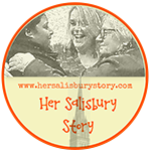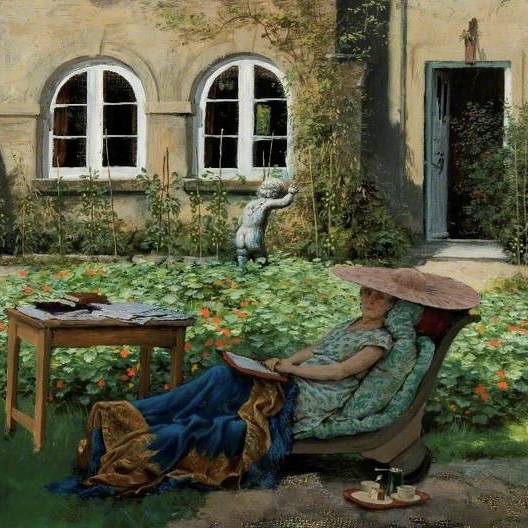Edith Olivier (1872 -1948) was by any definition a pillar of the local community, particularly in Wilton where she spent most of her life. During her lifetime she knew everyone of interest in the area but had contacts and friendships that went far beyond the locality. She was a writer of both novels and non-fiction; a well-read bluestocking; a committed Christian; and a very public-spirited person who gave much of her time to public service. She helped found the Wiltshire Women’s Land Army during the First World War. Despite being opposed to Women’s Suffrage in her earlier years, she became involved in local politics, becoming the first woman councillor on Wilton Borough Council in 1934. She was Mayor of Wilton from 1938-1941, when amongst other things she helped organise the resettlement of refugees. She never married. Her life changed forever in 1925 when she was in her early fifties, after her father and close sister’s death. She is remembered as an inspirational hostess to a circle of famous writers, artists, and composers, known as the ‘Bright Young Things’ or ‘Bright Young People’. Despite their great age difference, she became a very close friend of the artist Rex Whistler (1905-1944).
Early Life
Edith was born at Wilton Rectory on 31st December 1872. She was daughter of Dacres Olivier, Rector of the new Italianate Church in Wilton and private chaplain to the Earl of Pembroke, and Emma Selina Eden who was daughter of Robert Eden, Bishop of Moray and Ross. Emma was Dacres’s second wife. Edith was the eighth of ten children. Mildred or ‘Millie’ was born three years later and became Edith’s closest sibling and best friend. The Olivier family were of Huguenot descent and Edith’s second cousin was the actor, Sir Laurence Olivier.
Edith grew up in the environs of Wilton House and Estate. As children Edith, Mildred and the younger boys would often play with Lord Pembroke’s nieces and nephews. While she was growing up she spent time socializing with the Pembroke family and encountered their visitors, including politicians, aristocrats, intellectuals, and members of the literary establishment. As Anna Thomasson says in her book ‘It gave her a sense of superiority, both socially and intellectually, that never left her.’ She was described as rather eccentric but also having huge energy, intelligence, confidence, imagination, and strong opinions. Her early life and upbringing provided her with important connections
Education
Edith received schooling at home from her mother and subsequently a governess. She won a scholarship to St Hugh’s College Oxford (where Charlotte Anne ‘Annie’ Moberly 1 was Principal) in 1895 at the age of 22 years to read history but only completed four terms due to ill health (asthma). Whilst at Oxford she developed a friendship with Charles Dodgson (the writer Lewis Carroll) who was still resident at Christ Church but no longer teaching. She had a fleeting romance with a Don at Oxford but her father felt this man was not good enough for his daughter.

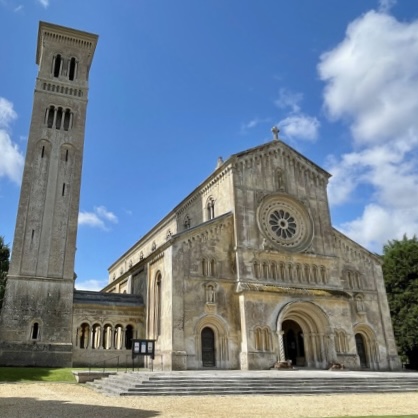
Wilton and Salisbury
In 1908 Edith’s mother died and Mildred and Edith took on the running of the Rectory. In 1912 Dacres retired, was made a Canon of Salisbury Cathedral and they moved into the Cathedral Close to No. 20 North Walk. Her life was dominated by her father and his care. He has been described as being both autocratic and conservative.
During the war Edith was a member of the Wiltshire Agricultural Committee and helped to found the Wiltshire branch of the Women’s Land Army, recruiting volunteers and training them up on local estates. A register of 4000 women was soon built up. In 1920 she was awarded the MBE for her work.
After Dacre’s death in 1919 Edith and Mildred, now in their late forties, moved to Fitz House in Teffont Magna. In 1921 they moved to the old dairy cottage, renamed the Daye House, set in the grounds of Wilton Park, hidden away behind the walls of the park. This was at the request of their childhood friend, Reginald, Lord Pembroke. Edith was to spend the rest of her life living in this house.
In 1924 Mildred, her sister and close friend, died of breast cancer. Edith at age 51 feared her life was over. After Mildred’s death Edith spent some time in Anglican Convent but the Mother Superior described her as ‘too rebellious of mind for a life of prayer and contemplation.’
A Change of Direction and The Bright Young Things
Still grieving for Mildred in 1925, Edith was invited to stay in San Remo, Italy. This proved to be a turning point for her, at the age of 52 years old. It was during this time she really got to know Rex Whistler, who at the time was a 19 year old student at the Slade School of Art.2 Edith immediately hit it off with Rex and they became close friends. In fact, it has been described as a romantic friendship. During this stay Rex and Stephen decided Edith should have an image makeover. She changed her hair style to a ‘bingle’ and a bob, and acquired a new wardrobe.
But the most fundamental change was her relationship with the much younger Rex and the widening of her social circle. Rex Whistler and Stephen Tennant were part of The Bright Young Things, a group of aristocrats, socialites, and Bohemians. This was during the interwar years and the roaring twenties. It could be seen as a young, privileged group of people rebelling against their Victorian parents and indulging in a hedonistic lifestyle throwing theatrical fancy dress pageants and weekend country house parties. This circle included some very notable names such as Cecil Beaton (whose photographs promoted the public image of the group), the poet Siegfried Sassoon, socialite Stephen Tennant, the writer Osbert Sitwell and the composer William Walton. Edith became their hostess, confidante, and muse. For example, she was instrumental in encouraging Cecil Beaton, the famous photographer, to move to Wiltshire.3
Edith introduced Rex to a world with aristocratic connections and the ‘Arcadian’ beauty and peace of Wilton Park. Sir Philip Sidney wrote Arcadia at Wilton in 1578 and the legend goes that he was inspired by the park’s beauty and peace. Arcadia, the rural retreat and earthly paradise with its trees and rivers would become a key theme. Edith encouraged Rex’s art and he inspired her writing. Rex and Edith shared a romantic imagination and theirs was a meeting of minds. Rex had no interest in modern abstraction but was drawn to a much earlier Georgian style of art. In 1926 Edith wrote The Love-Child, her first and most successful novel, which was about a woman who is haunted by an imaginary child.4
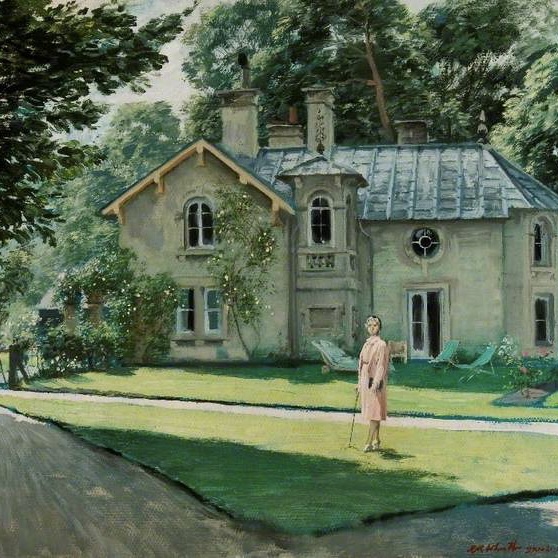
Supernatural Experiences
Edith was fascinated by history and the spirit of the landscape. She believed that darker, more primitive, elemental energies resided within the Wiltshire landscape and Salisbury Plain. Edith recounts some of her supernatural experiences in her autobiography ‘Without knowing Mr Walkley, named after The Times drama critic. In her youth she had a strong desire to become an actress. In chapter 16 ‘Revenants of the Plain’ in October 1916 during the First World War, she describes how she was driving between Devizes and Swindon whilst overseeing the Wiltshire Women’s Land Army. She left the main road and ‘soon entered a very strange avenue. I was passing through a succession of huge grey megaliths,5 which stood on either hand, looming like vast immovable shadows within a curtain of softly falling rain.’ She realised that she was approaching Avebury, the Megalithic site and one of the largest stone circles in the world. She reached the centre and climbed the earthwork. Edith noticed a village fair in progress and spent a short while watching it before returning to her car due to the heavy rain. Nine years later she revisited Avebury with a friend. They came across a guidebook in a local inn where they read that an annual fair had been held in Avebury but had been abolished in 1850. She was convinced she had seen a ‘ghost fair.’ The following year at a learned society meeting in Avebury, she discovered that the avenue of megaliths by which she approached the village had disappeared before 1800.
She compared her experience to that of Miss ‘Annie’ Moberly and her friend and fellow academic, Miss Eleanor Jourdain which was described in the book ‘An adventure’ 1911, for which Edith wrote an introduction.6
In Chapter 17 ‘Things past explaining’ Edith describes her own experience of the ‘Bishops Birds’ legend also described by Annie Moberly. Annie’s father, the Bishop of Salisbury died in 1885 and within an hour or two, she saw two dazzling white birds, with large wing spans, flying up from the ground and over the Cathedral. On the 16th August 1911 Edith was on an outing with the Wilton choirboys to Wardour Castle. On the return journey she saw two large white birds with wings ‘so brilliantly white that even their shadowed underside shone like water reflecting light’ flying up over the Hurdcott Meadows. Upon arrival in Wilton she discovered that Bishop Wordsworth had only just suddenly and unexpectedly died. Edith describes in the same chapter several other strange happenings including several visions of the fabled kingdom of Lyonesse whilst on visits to Lands End.
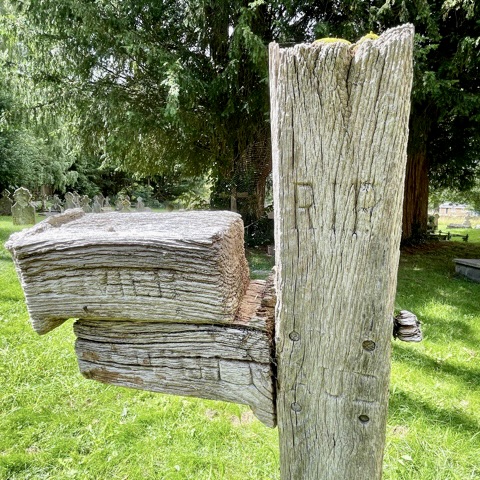
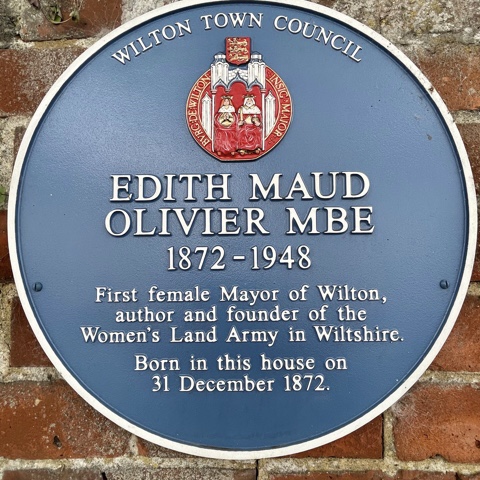
Final Years
Tragically Rex was killed by a mortar in 1944 whilst fighting in Normandy. Edith was devastated. She spent her final years planning a book about Rex which was never completed. She did write one final book about her beloved Wiltshire which was published posthumously.
Edith died at home in the Daye House on 10th May 1948 after having three strokes. Her funeral was held 14th May at the Parish Church of St Mary and St Nicolas. She is buried close to her parents and her sister Mildred. Her monument is a simple wooden cross, now sadly quite badly decayed. As her coffin was lowered into the ground there was a swish of wings as a pigeon took off into the sky, and David Herbert and Cecil Beaton commented “Edith soaring through tracks unknown!”
Legacy
Edith’s life is recorded in her nightly journals which she wrote daily for over 60 years, with very few gaps. Her extensive journals and letters, held at the Wiltshire and Swindon History Centre, provide a fascinating record, particularly of life between the First and Second World Wars and a world that has long since disappeared.
Researched and written by Susan Brain.
Notes
1 You can read our profile on Charlotte Annie Moberly here: https://hersalisburystory.com/stories/historic/charlotte-anne-elizabeth-moberly/
2 Rex Whistler was a friend of Stephen Tennant whose mother Lady Pamela, was a neighbour at Wilsford Manor in the Woodford Valley and Edith’s good friend. Rex painted several paintings of Edith, and Salisbury Museum holds an archive of his works.
3 Edith helped him find Ashcombe House near Salisbury which he leased from 1930 to 1945. He then moved to Reddish House near Broad Chalke. In 2014 the Salisbury Museum held a fascinating exhibition – Cecil Beaton at Home: Ashcombe and Reddish – with photographs and artifacts relating to his life, the Bright Young Things and Edith.
4 Regarded as minor classic, this story is about a spinster haunted by an imaginary child.
5 Megaliths are large prehistoric stone structures or monuments.
6 Edith also goes on to mention J W Dunne’s theory of ‘serialism’ from his controversial book (hugely popular at the time) ‘An experiment with time’ – ‘all our individual minds are merely aspects of a universal common-to-all mind, which mind has for its four-dimensional outlook all the individual outlooks.’ Edith states ‘Here, if anywhere, one feels as if one had been taken up into that ‘universal, common-to-all mind’. It is not a question of ‘seeing ghosts’ or of ‘having visions’: it is that sometimes, under the influence of that great spirit that seems ever brooding over the Plain, one’s own little outlook is lost, and one is incorporated into something older and bigger and wiser than oneself. One knows what the past was like.
Sources
Howells, J and Newman R., Women in Salisbury Cathedral Close. Sarum Studies 5. Sarum Chronicle.
Middelboe, Penelope (1989) Edith Olivier: from her journals 1924-48. Weidenfeld & Nicolson
Olivier, Edith (1938) Without knowing Mr Walkley. Faber & Faber. Reprinted by Bello an imprint of Pan Macmillan
Thomasson, Anna (2015) A curious friendship: the story of a bluestocking and a bright young thing, Macmillan
Woolley, Sonia (2016) Without knowing Miss Olivier… Sarum Chronicle 16 p.116-123
Edith Olivier – Wikipedia
https://en.wikipedia.org/wiki/Edith_Olivier
Edith Olivier Archive including diaries and letters – Wiltshire and Swindon History Centre https://www.wshc.org.uk
Rex Whistler Archive – Salisbury Museum
https://www.salisburymuseum.org.uk/collections/rex-whistler-archive
Cecil Beaton’s Bright Young Things – Art UK
https://artuk.org/discover/stories/cecil-beatons-bright-young-things#
BBC History Extra Podcast
https://www.historyextra.com/period/medieval/medieval-universities-and-an-unlikely-friendship/
Images:-
Copyright:- With kind permission of Salisbury Museum ©
